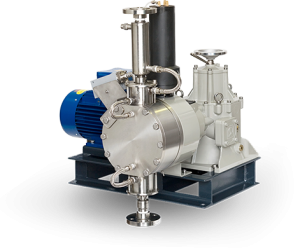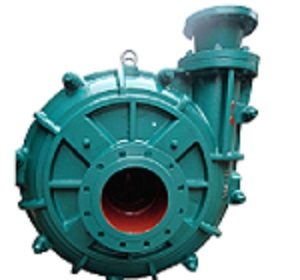Slurry pumps
All liquids that are mixed with some solids and impurities are commonly defined as slurry. Usually, along with the definition of slurry, there are also other definitions, such as the type of slurry composition, the size of the particles and the type of particles present in it, the characteristics of the slurry, the amount and volume of the particles, the type of liquid, and so on.
Slurry pumps are used to pump these types of liquids. The structure of the slurry pumps is very simple, and its design does not have the complexity and characteristics used in some other types of equipment.
The type and composition of slurry liquids and its characteristics in choosing this type of pump is important but it only identifies the strength and type of pump structure. Generally speaking, slurry pumps are of good use and are of high quality, having a high self-confidence in the mechanical design of these types of pumps, to make them a more reliable option.
The slurry pumps used today for slurry pumping are produced in various designs and models. The most common and most known used pumps are centrifugal pumps, however, positive displacement pumps or some other types of pumps, such as Venturi edtors, are also used to pump slurry.
Slurry pumps are often able to pump liquids that many other pumps cannot do, due to the fact that these types of pumps are a strong and resistant centrifugal pump designed and constructed for heavy duty operations. Centrifugal slurry pumps are designed to use centrifugal force, which means that all types of centrifugal pumps use a rotary propeller to transfer fluid. This propeller transmits energy to the liquid and causes fluid to pumping.
What is a components of slurry pump?
IMPELLERS
CASINGS
As noted above, the slurry fluid is composed of a variety of particles and contaminants, and it is proportional to the structure of these liquids, in which the components of the slurry pump are also published and constructed. Accordingly, in order to find and select the best slurry pump, the type and concentration of solids in the slurry should be considered first.
Therefore, the most important factor in slurry classification is the concentration of their solids. In general, slurries that contain 5% of solids are commonly referred to as commercial slurries, which are generally pumped by the category of slurry pumps known as Commercial pumps, the general slurry refers to a slurry that contains about 20% of the solids in weight It is usually suitable for pumping many types of slurry, and this is why they calls general slurry pump.
Slurry pumps that contain about 40 percent of the solids in their weight should be used for heavy slurry pumps. But if some slurry liquids contain more than 40% and up to 70% of solids in weight, then they should use slurry pumps for minerals, sand, which are known as slurry mineral pumping.
Of course, this is not the only factor in the classification of slurry pumps, and for the purpose of classifying these pumps, the peripheral speed of the impeller is also very important. In the design of the slurry pumps, the peripheral of the impeller is based on the type of slurry and the risk of wear, since it not only needs to be able to easily perform the work of liquid pumping, but also against wear and tear and higher wear resistance, The longer the lifetime, because solids in the liquid can cause the wear and tear of the pump.
Undoubtedly, the best methods for classifying slurry pumps can be categorized by these pumps based on the solids used in applications of these types of pumps. Slurry pumps are commonly used to pump mud, clay, sand, silt, and other types of slurries that are mixed with solids of up to 2 mm in thickness.
In this category, the measurement range is mainly: Mud/clay pumps suitable for pumping mixtures with solids of less than 2 microns. Slurry commercial pumps are usually used for pumping liquids mixed with solids between 2 and 50 microns, general slurry pumps are used for pumping liquids mixed with solids between 50 and 100 microns, heavy pumps for slurry also for pumping liquids mixed with solids between 100 to 500 microns. Finally, heavy duty minerals are used to transfer and pump liquids with solids between 500 and 2000 microns.
Of course, other types of pumps may also be taken into account in this classification. For example, Sand and gravel pumps usually used for pumping sand containing fluids between 2 and 8 mm. Gravel slurry pumps are also commonly used for pouring slurry mixtures with solid materials up to 50 mm. Dredge pumps are also a variety of heavy pumps suitable for pumping slurry mixtures with solids above 50 mm.
Types of slurry pumps
According to the above, it is possible to use a variety of slurry pumps for their type of use and the liquids to be pumped as follows:
- Slurry Pumps
- Gravel pumps
- Dredge pumps
- Sump pumps
- Froth pumps
- Carbon Transfer pumps
- Submersible pumps
The four main methods used to design slurry pumps are generally:
- Slurry pumps with horizontal and vertical reservoirs and dry-installed
- Pumps with a vertical reservoir designed for semi-dry installation
- Pumps that are designed and constructed with a tank for dry installation
- Pumps designed and constructed for wet areas and referred to as floating or Submersible pumps.
Classification of slurry pumps according to their resistance to abrasion and wear resistance
slurry pumps require different abrasion resistance due to their type of use. Accordingly, the slurry pumps are designed and manufactured in the following ways:
- Pumps that have very high abrasion resistance under very abrasive conditions
- Pumps that have good resistance to abrasive conditions
- Pumps which do not have high resistance to abrasive conditions.
CONCEPTS OF MATERIAL SELECTION
According to the exact formulas, slurry pumps are considered and built according to the amount of solids present in the liquid and the amount of resistance required for these solids due to the erosion conditions that they create. Accordingly, in order to fully understand the criteria required to produce a specific slurry pump for precise use, it is necessary to consider different parameters.
What to keep in mind is that just some limiting factors should be taken into account when selecting slurry pumps for different applications.
The restrictions that should be considered for selecting the slurry pump
1- Type of pump depending on the type of liquid
2- The speed required for pumping
3- Options in different models produced
Selection of wear material
- Metal
According to many experts and according to the existing records, the use of metal as a whole for designing slurry pumps is a more reliable option than rubber because it has a higher tolerance and is more resistant to erosion and abrasive conditions.
But the best types of metals used to make a slurry pump are:
– High iron chrome:
This type of iron has a very high resistance and nominal stiffness of 650 BHN.
The pH value of this type of metal can be as high as 3.5, which is the standard value for making all kinds of pumps.
– Manganese steel
Manganese steel, in particular, for the construction of slurry pumps, is a very good option to be considered as a nominal 350 BHN.
- Elastomers
One of the most widely used rubbers for slurry pumps is natural rubber, but nonetheless, other types of rubbers, mainly made from synthetic rubber families, are also used to produce slurry pumps. The important thing is that the higher the rubber resistance, the more expensive the pump should be paid.
However, the crucial factor for selecting rubber is the amount of solids in the slurry that create different abrasives, but mainly tires of between 5 and 8 mm are best suited for use in the production of slurry pumps, because if they do not follow this The thickness of the solid rubber in the liquid, especially if thick and hard, can easily damage the rubber and then pump it.
Generally, a variety of types of rubbers are used to produce slurry pumps, most commonly used and most applicable are:
- Types of elastomer family rubbers
- Natural rubber
- Many of thesynthetic rubber and polyurethane rubber






